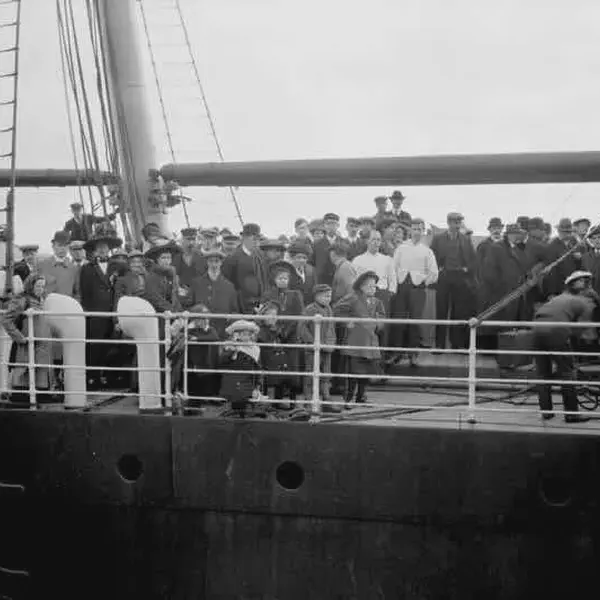
At Grosse Isle, Canada, 40 Irish Famine Immigrant Ships Wait to Unload
May 31, 1848
During the Great Famine in Ireland (1845-1849), a mass exodus of Irish people fled to North America in search of a better life. Canada, then a part of British North America, was one of the primary destinations. The influx of immigrants, many of whom were suffering from famine and diseases such as typhus, led to a crisis at ports of entry like Grosse Île.
Ships were often forced to wait for long periods before passengers could disembark due to the quarantine measures and the backlog of vessels. The conditions on these waiting ships were dire, exacerbating the suffering of the immigrants.
Grosse Île served as a quarantine station for the Port of Quebec from 1832 to 1937 and is most notably remembered for its role during the Irish Famine migration of 1847.
The island was the site of an immigration depot which housed predominantly Irish immigrants coming to Canada to escape the Great Famine of 1845–1849. In 1832, the Lower Canadian Government had previously set up this depot to contain an earlier cholera epidemic that was believed to be caused by the large influx of European immigrants, and the station was reopened in the mid-19th century to accommodate Irish immigrants who had contracted typhus during their voyages. Thousands of Irish were quarantined on Grosse Isle from 1832 to 1848.
In 1847, the number of Irish immigrants arriving in Canada surged dramatically. Ships, often in poor condition and overcrowded, arrived at Grosse Île, which was ill-prepared for such a massive influx.
Grosse Île served as a quarantine station to prevent the spread of infectious diseases. However, the sheer number of arrivals and the prevalence of illness among the passengers overwhelmed the facility.
It is believed that over 3,000 Irish people died on the island and that over 5,000 are currently buried in the cemetery there; many died en route. Most who died on the island were infected with typhus, a result of poor sanitary conditions there in 1847. Grosse Isle is the largest burial ground for refugees of the Great Famine outside Ireland. After Canadian Confederation in 1867, the buildings and equipment were modernized to meet the standards of the new Canadian government’s immigration policies.
Grosse Isle is sometimes referred to as Canada’s Ellis Island (1892–1954), an association it shares with the Pier 21 immigration facility in Halifax, Nova Scotia. It is estimated that in total, from its opening in 1832 to its closing in 1932, almost 500,000 Irish immigrants passed through Grosse Isle on their way to Canada.
Memorial Site
Today, Grosse Île and the Irish Memorial National Historic Site serve as a memorial to those who lost their lives and a reminder of this important chapter in Canadian history.
Grosse Isle
Is an island located in the St. Lawrence River in Quebec, Canada. It is one of the islands of the 21-island Isle-aux-Grues archipelago. It is part of the municipality of Saint-Antoine-de-l’Isle-aux-Grues, located in the Chaudière-Appalaches region of the province.